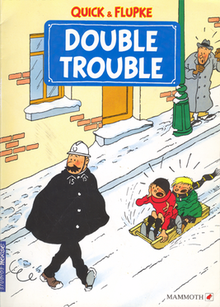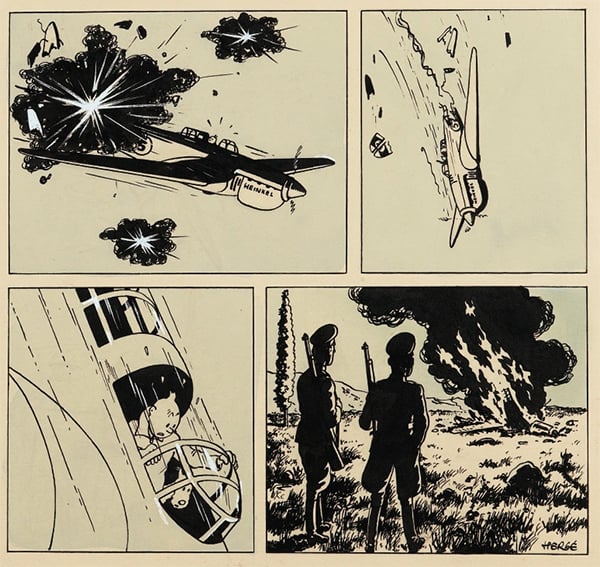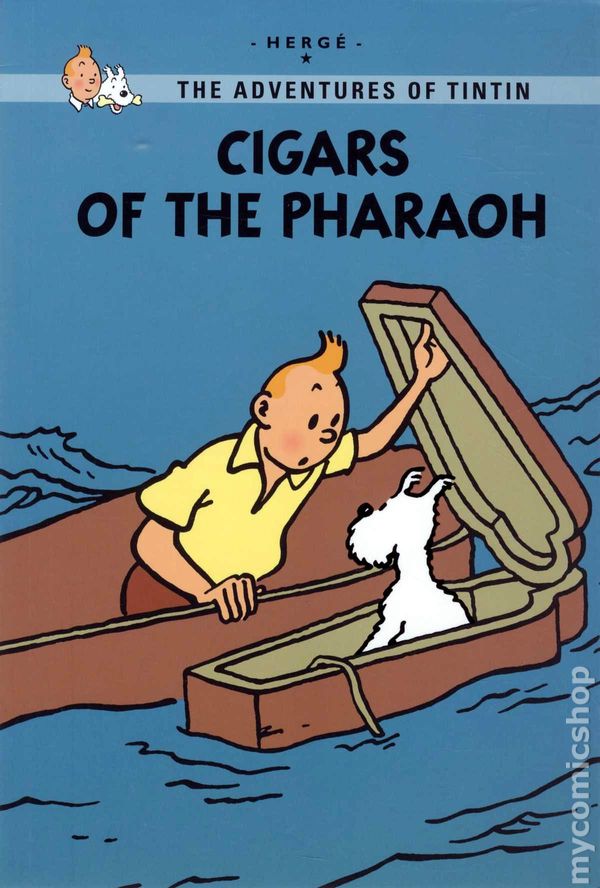1920-1940 The Golden Age Part I

Hergé, with a bust of Tintin Sculpture by Nat Neujean[
Georges Prosper Remi (1907 – 1983), also known by the pen name Hergé, is a Belgium cartoonist. He is best known for famous comic series, The Adventure of Tintin and some of his other series include Quick & Flupke and The Adventures of Jo, Zette and Jocko.

The Adventures of Jo, Zette and Jocko.

Quick & Flupke
Hergé began his career when he developed his first comic series, The Adventures of Totor for Scouting magazines in 1926. He later created The Adventures of Tintin in 1929 for the conservative Catholic newspaper Le Vingtième Siècle. With a story surrounding boy reporter and adventurer Tintin and his dog Snowy, the series’ early comics (Tintin in the Land of the Soviets, Tintin in the Congo and Tintin in America) were intended as as anti-socialist propaganda for children.
Fun Fact: Many of Hergé’s initial comics were printed in black and white when they first published in magazines. After the great success of The Adventure of Tintin, he got a chance to tweak his works and re-published them in colours.

Main characters of The Adventure of Tintin,Tintin and his dogs
Something I find interesting is Hergé’s storytelling technique by using illustrations and story panels. It’s quite noticeable that the panels are consistent throughout the pages. There is also a great use of static and continuous framing technique that helps creating an observational narrative. Compared to other comic books (ex. Marvels or DC comics) that employ constant shifting angles, Hergé tried not to bombard readers with too much new information.
/read-tintin-comics-online-free-pdf-download-017.jpg)
Hergé , Tintin, Tintin in Tibet, 1960.

Hergé , Tintin, Prisoners of the Sun, 1948.
And in terms of the linework of The Adventure of Tintin’s illustrations, they are very clean and suitable for comic (easy to read and print). In some occasions, Hergé also created dramatic effects with solid black for shadows (example below).

Hergé , Tintin, King Ottokar’s Sceptre (detail), 1939.
References:
https://en.wikipedia.org/wiki/Hergé
https://en.wikipedia.org/wiki/The_Adventures_of_Tintin
http://tintin.wikia.com/wiki/Hergé

Leave a Reply
You must be logged in to post a comment.